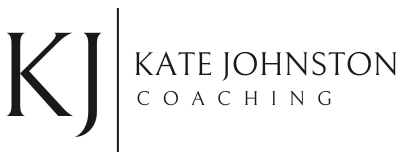I’m Kate, your Eating Habits & Weight Loss Coach
I help career women break bad eating habits and feel confident, in-control and at peace with food.
Hi, I’m Kate, your Eating Habits & Weight Loss Coach
I help career women break bad eating habits and feel confident, in-control and at peace with food.

A Simple Guide to Help Patients Distinguish True Hunger from Cravings
In a world overflowing with delicious food options, many patients find it challenging to distinguish true hunger from cravings, resulting in overeating and difficulty making healthier food choices. By helping them navigate these often murky waters, you can unlock a range of physical and emotional benefits.
When patients understand what their bodies truly need—and when—they’re better equipped to make healthier choices. This is a key component in intuitive eating.
This not only promotes effective weight management, but also fosters a positive relationship with food. Both of which will empower them to feel more in control of their eating behaviors, their health, and their bodies.
So in this simple guide, I’ll be sharing:
- How to tell if it’s true hunger vs. cravings
- Specific questions to ask your patients
- A printout you can provide them to help them distinguish between hunger and cravings
- Simple steps they can start taking now to honor their hunger needs and manage cravings
These will help your patients eat when truly hungry and decrease the times they’re eating food their bodies don’t need.
*I’ve also linked 3 podcast episodes I did on cravings that can provide you with more insight, at the end of this blog post. Plus, 2 episodes on intuitive eating.
True Hunger & How to Tell
True hunger is the body’s physical need for fuel, driven by low energy levels or nutrient needs, with the hormone ghrelin alerting us when it’s time for food.
When patients are eating in response to true hunger, they’re less likely to overeat or undereat, forming a healthy balance. So, the key is to educate them on the key signs and symptoms of true hunger.
It’s important to note that many individuals eat at “meal-time,” just out of habit (termed habitual eating). When they have awareness of their physical hunger signals, they’re better able to differentiate if they’re truly hungry.
Also, dehydration can often manifest as hunger signals, leading individuals to misinterpret their body’s needs. (Stookey, J.D., et al. (2007). The role of hydration in energy balance and obesity. Journal of Nutrition.)
Additionally, insufficient sleep has been shown to increase both the intensity and frequency of hunger and cravings, further complicating the challenge of maintaining healthy eating habits. (Taheri, S., et al. (2004). Sleep deprivation and the risk of obesity: a systematic review. American Journal of Epidemiology.)
This guide and printable table will address all 3 of these, to help provide clarity to your patients.
Key signs and symptoms of true hunger:
- Gradual onset that slowly builds
- Physical symptoms like stomach growling, headache, slight nausea
- Starts with physical symptoms…then have the thought, “I’m hungry” or “I should eat something.”
- A variety of foods will satisfy the need (rather than one specific food or food type)
- Tends to not dissipate with drinking fluids
- Dissipates when eat
What to ask your patients:
“What lets you know when it’s time to eat?”
“What are your physical hunger signals?”
Cravings & How to Tell
Cravings are more emotional or psychological desires for specific foods. Often sweet, salty/savory, or fatty foods. You can think of them (in general) as the body’s emotional need for pleasure.
They’re often driven by triggers such as stress, boredom, or even environmental triggers (that plate of delicious-looking cookies a colleague baked!).
They can feel overwhelming and urgent, and leave patients feeling out of control, which then can have a negative emotional impact. Cravings also make it challenging for patients to stick to the healthier foods you’re trying to encourage them to eat.
To note, various nutrient deficiencies can cause a craving for specific foods, especially ones abundant in that nutrient.
Also of importance, is if a patient feels deprived of a food they enjoy, they will often begin to crave it.
Potential triggers for cravings:
- Emotions (negative or positive)
- Specific smells or visuals (advertisements, walking past a bakery)
- Social settings or habitual patterns (like snacking while watching TV)
- Nutrient deficiencies (less common)
- Restriction/deprivation of specific food
Key signs and symptoms of cravings:
- Sudden, intense desire for a specific food (often sweet, salty, fatty)
- Hard to focus on anything else
- Almost always disappears if ignored or distracted
- Not always accompanied by physical hunger cues
What to ask your patients:
“Do you suspect that you eat when you’re not truly hungry?”
“Have you noticed patterns for when or what triggers this?”
“Are there specific foods you commonly crave or eat when this happens?”
Key Differences Between Hunger and Cravings (Printout)
Patients often struggle to remember all the valuable information you share. So, I’ve created a table for you to print out and give them to help them distinguish between true hunger and cravings.
It reveals the key difference between true hunger and cravings, so they know exactly which they are experiencing. Plus, helpful questions they can ask themselves in addition for clarity.
Click here to download/print your table.
Actionable Steps to Help Patients Eat Due to Hunger Instead of Cravings
Once you’ve educated your patients on true hunger vs. cravings and asked them the questions above, giving them a few actionable steps they can easily do on their own is a great starting point.
First step:
Have them start asking themselves before they go to eat if they’re truly hungry or if it’s something else. (Do they feel their hunger cues or not?)
*Have them refer to the table to help them distinguish if true hunger or not.
If they’re still unsure, this can help:
You can have them ask themselves, “Would I eat a plate of a ‘boring’ food right now?” (Such as chicken and a vegetable, or rice and beans.) If the answer is no, that can clue them in that they might not be truly hungry.
Next steps:
If they’re truly hungry, they’ll likely want to go ahead and eat.
If they’re not truly hungry, encourage them to ask themselves what might have been the trigger for the craving. This could be an emotion, a visual trigger, someone offering food, etc.
Once they’ve taken their best guess, have them ask themselves what non-food alternative they could do instead.
For example:
If they’re feeling stress, maybe a quick stretch or a few slow, deep breaths would be a good alternative. If it’s boredom, what’s something they can do instead of eating? Maybe go for a 5-minute walk or talk to a friend or colleague.
If it’s a visual trigger or a smell or they’re having difficulty determining what it is exactly that’s triggering the craving, they can just visualize an ocean wave passing over them.
Additional tool:
Assuring your patients that a craving will eventually pass, just like an ocean wave passing over them, will help them to not try to fight it with willpower. (Fighting a craving only makes you think about it more and then the feeling will stay around for much longer.)
While visualizing the ocean wave, they can take a few slow deep breaths to help and remind themselves the feeling will pass if they let it.
Summary of Action Steps:
- Every time they go to eat, ask if hungry or something else
- If truly hungry, go ahead and eat if appropriate
- If craving and have an idea of the trigger, come up with non-food alternative
- If unsure of trigger, visualize ocean wave passing by
Celebrating Progress During Follow-up Visits
Follow-up visits are crucial for tracking progress and fostering a supportive environment. Especially since cravings can take time to overcome.
When your patients come for follow-ups, ask them if they’ve made any discoveries about their hunger cues versus cravings. (I encourage you to celebrate that as a win with them if they’ve made some discoveries.)
Then ask them to share what they were successful with first, to help keep the focus on the positive. Next, any challenges can be addressed.
The important part is to celebrate progress and not expect perfection. Also, to let them know that it does take some time to learn and change.
Finally, keep encouraging them in a positive way, so they feel empowered and never ashamed if they feel they didn’t do well.
Your dedication to your patients’ well-being is commendable. You’re truly making a difference in the world.
I’d love to hear your thoughts and questions, and connect with you on LinkedIn. Click here to connect on LinkedIn.
You can also get in touch with me here.
For a deeper dive into cravings, listen to these 3 related podcast episodes from my show, Eating Habits for Life:
For a deeper dive into intuitive eating, listen to these 2 episodes:

KATE JOHNSTON
Eating Habits & Weight Loss Coach
Helping career women break free from emotional eating, overeating and mindless eating.
Start feeling more healthy, confident and free by booking a free consultation with me for a personalized plan.
